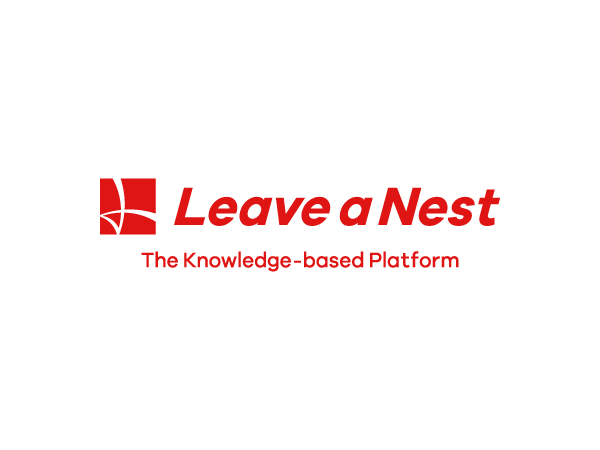Science Castle 2022 Kanto Conference
| Event Name | Science Castle 2022 Kanto Conference |
|---|---|
| schedule | Saturday, December 3, 2022, 9:45-18:00 |
| Location | Congress Square Haneda (Haneda Innovation City) Access |
→directional marker or indicator Science Castle 2023 Kanto
The manual will be updated from time to time. We will contact you by e-mail when major changes are made, but we will not contact you for minor modifications; please check the manual on your own.
Update Information
- Nov. 1 Open to the public
Audience wanted!
The conference is open to middle and high school students, middle and high school teachers, researchers, business people, and the general public for auditing.Advance application is required.will be.
We will not set a deadline for advance application, though,Applications will be closed when the venue reaches capacity.Please apply as soon as possible.
All co-researchers and faculty members other than the presenting principal investigator must also apply in advance.
To register, you will need to register your LIVERNESS ID.
What is LIVERNESS ID?https://id.lne.st/whatis
New registration for Liverness IDhttps://id.lne.st/pre_regist
Download Abstracts
You can download the abstract book here. Please use it not only for auditing but also for your research activities in the following year.
Oral Presentation
O-01
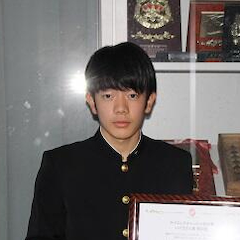
Akinao Shibata (Tohoku Gakuin Junior & Senior High School)
Elucidating the unique relationship between dragonflies during hatching.
O-02
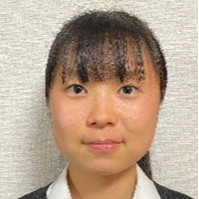
Mei Echigoya (Myogogakuen Junior & Senior High School)
Development of brain training tasks using scratch and its clinical application
O-03
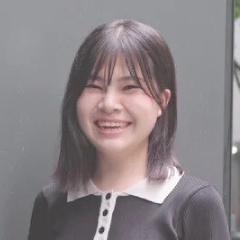
Satone Tanigaki (Ibaraki Prefectural Takezono High School, International Studies)
Development of biodegradable materials with temperature-selective solubility
O-04
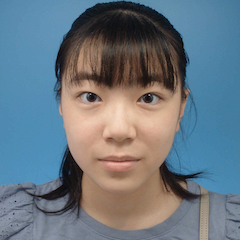
Fumino Otani (Takehaya Junior High School attached to Tokyo Gakugei University)
Tissue Culture of Clover
O-05
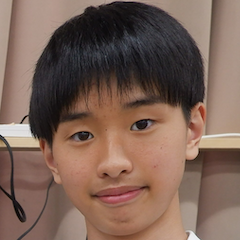
Haruto Aiki (Asano Junior & Senior High School)
In Vivo and In Vitro Changes in Fish Sex Change and Establishment of Sex Identification Using Blood Sampling
O-06
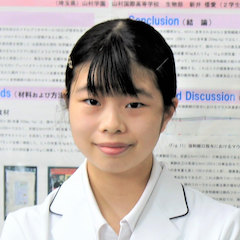
Hana Shiota (Yamamura International High School, Yamamura Gakuen, Biology Club)
Bitter chocolate for skin care (sun protection)
O-07

Junpei Saito (Keio Shiki Senior High School)
Development of lightweight, low-cost drive actuator optimized for RCJ
O-08
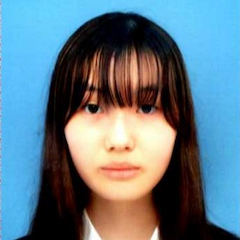
Kaho Fujita (University of Tokyo Secondary School attached to the Faculty of Education)
A Day in the Life of a Red-Bellied Newt: Analysis of Circadian Rhythm and Sociality by Construction of a Behavioral Analysis System
O-09

Manjiro Nozawa (Secondary School attached to the Faculty of Education, The University of Tokyo)
How did protozoa, which can only live in the gut of termites, maintain their diversity until the present day?
O-10
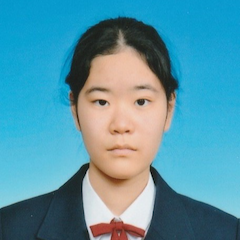
Aimi Sawai (Kanagawa Prefectural Kawawa High School)
Cosmic ray observation by synchronization of fog box and cosmic ray detector
O-11
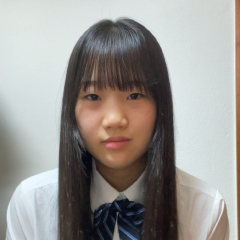
Nanka Fujimoto (Sanda Kokusai Gakuen High School)
Exploration of regenerative factors expressed in the blood of red-bellied newts.
O-12
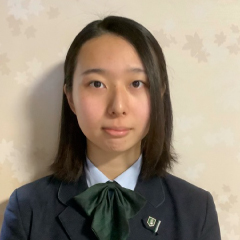
Yuri Minoura (Bunkyo Gakuin University Girls' Senior High School)
Investigation of the Influence of Ink on the Formation of Green Luster in Red Pigment
Schedule for the day
| Venue | Main Venue |
Poster Room | Planning venue |
| 9:00 | inauguration | inauguration | – |
| 9:45 | opening ceremony (Opening remarks and introduction of partners) |
||
| 10:05 | keynote speech | ||
| 10:30 | <Oral Presentation Introduction of Oral Presentation Judges Oral Presentations O-01 to 04 Oral Presentations O-05 to 08 Oral Presentations O-09-12 |
||
| 13:35 | lunch break | ||
| 14:15 | First half of poster, odd number | ||
| 15:05 | Second half of poster, even number | ||
| 16:05 | special project | special project | |
| 17:05 | Awards Ceremony and Closing Ceremony | ||
| 18:00 | end |
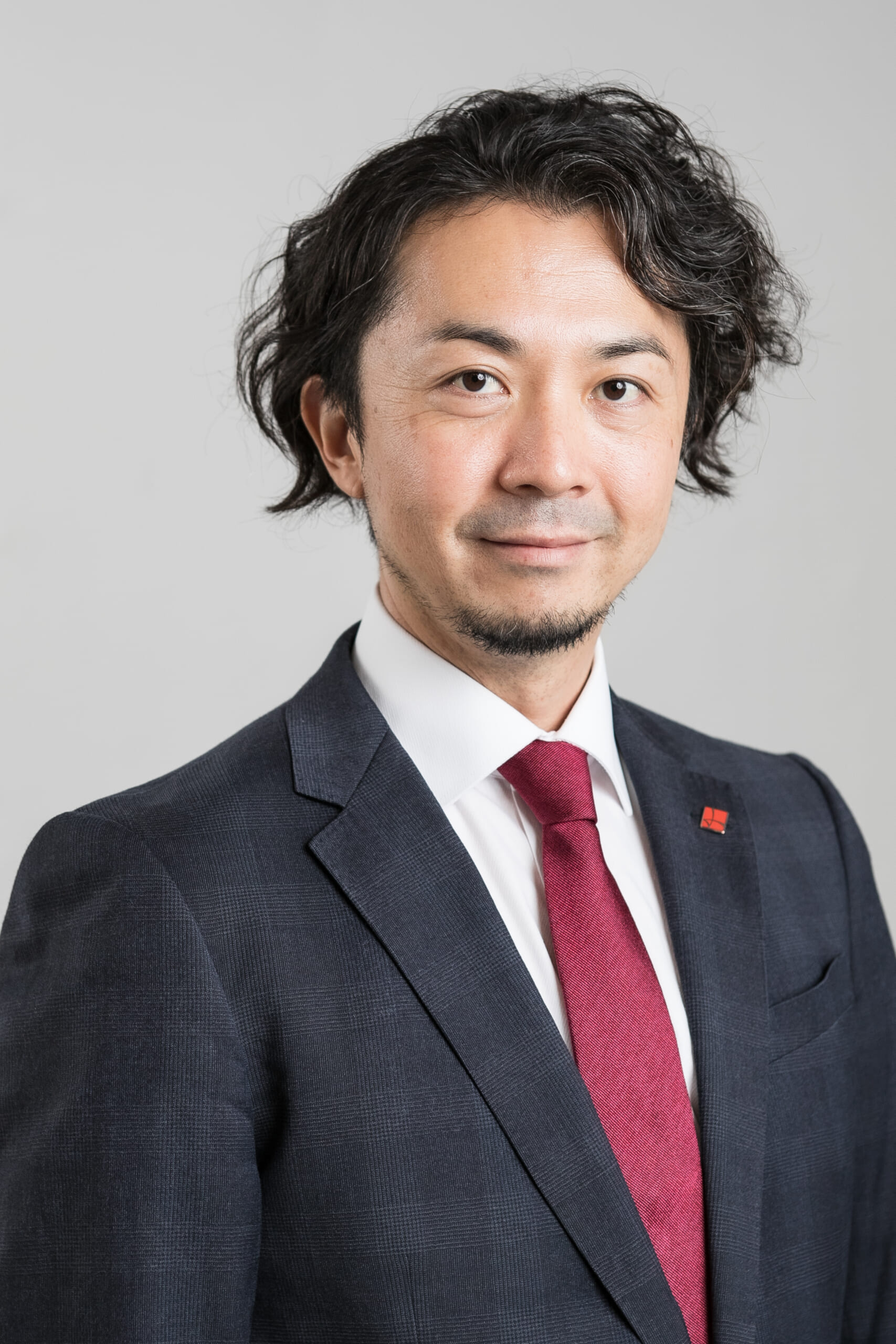
Kiyoshi Inoue Head of Jury
Doctor of Pharmacy
CKO, President and Representative Director, Liverness, Inc.
D., Pharmacist, Graduate School of Pharmaceutical Sciences, Tokyo University of Pharmacy and Life Sciences, founded LIVERNESS in 2002 with only undergraduate and graduate students of science and technology while still in graduate school. After completing the doctoral process, he worked as an assistant professor and lecturer at the Faculty of Science, Kitasato University, an assistant professor at the Graduate School of Medicine, Kyoto University, and a specially appointed associate professor at Keio University before assuming and concurrently serving as a professor of advanced pharmacy at the Faculty of Pharmaceutical Sciences, Kumamoto University and a visiting professor at the Faculty of Pharmaceutical Sciences, Keio University in 2018. While conducting research and development, he has been involved in launching joint research projects with universities and research institutions and supporting the establishment of research institutes. He has also been involved in the launch of many venture companies and serves as an advisor.
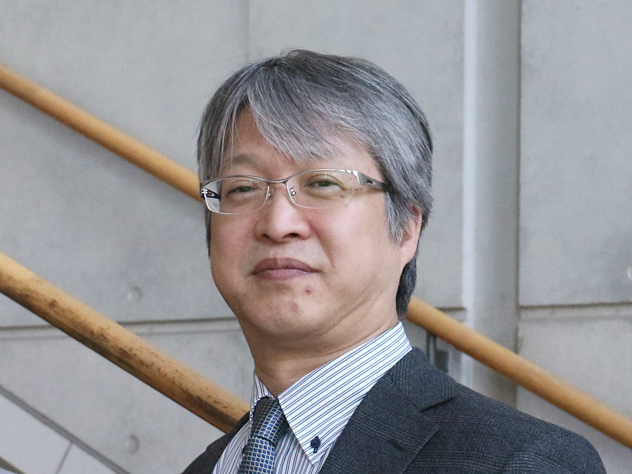
Toru Yamazaki
Doctor of Engineering
Kanagawa University Faculty of Engineering Department of Mechanical Engineering Professor/Director of Academic Affairs
D. degree in December 1997 from the University of Tokyo after leaving the University of Tokyo's Graduate School of Engineering midway through his doctoral studies. After working as an assistant at the University of Tokyo and as a full-time lecturer and associate professor at Kanagawa University, he is currently a professor. he established Advanced Technology Development Institute, Inc. in 2007, established the Next Generation Sound and Vibration Fundamental Technology Research Association in 2014, and has been a member of the Expert Committee of the Central Environmental Council since 2011, as well as a chairman of various academic societies. He mainly conducts research on dynamics (vibration and noise) in mechanical engineering. This year marks the 25th anniversary of his laboratory, which has produced about 350 graduates and is carrying out several projects that he has co-developed with companies, researchers from other universities, and students.
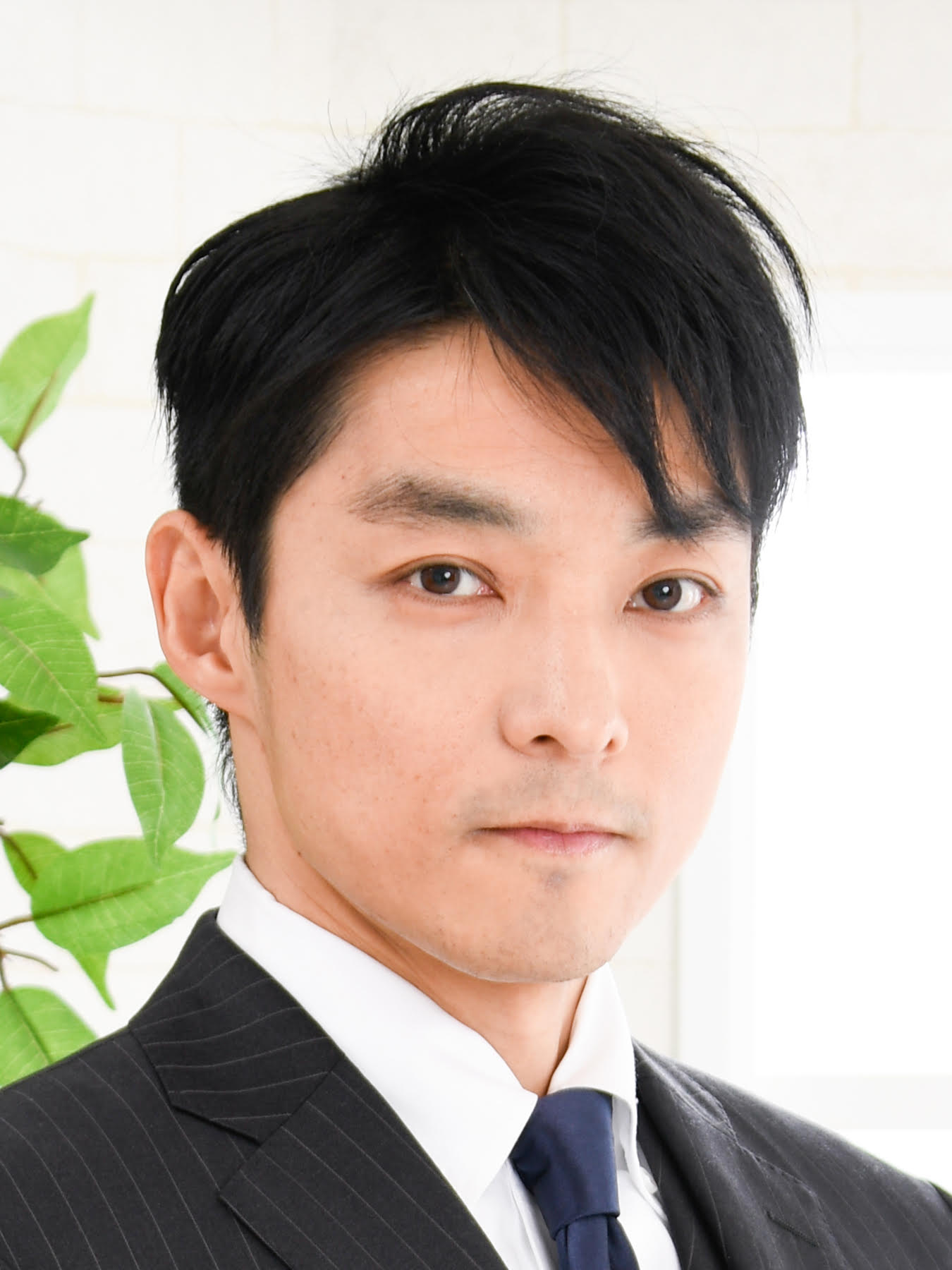
Naoya Kumagai
Doctor of Pharmacy, Pharmacist
Professor, Faculty of Pharmaceutical Sciences, Keio University
2005 Completed Doctoral program, Graduate School of Pharmaceutical Sciences, The University of Tokyo (Doctor of Pharmacy, Pharmacist).
After studying abroad in the U.S., teaching at a national university, and working as a researcher at a public interest foundation research institute, he assumed his current position.
He has been engaged in research in organic chemistry since his doctoral program. He has been engaged in research on the development of new chemical reactions and has presented to the world efficient methods for the production of high value-added organic compounds such as pharmaceuticals. Recently, he has been conducting research on the chemical synthesis of unique new molecules that do not exist in nature 2022, aiming to develop functional materials designed and controlled at the molecular level.
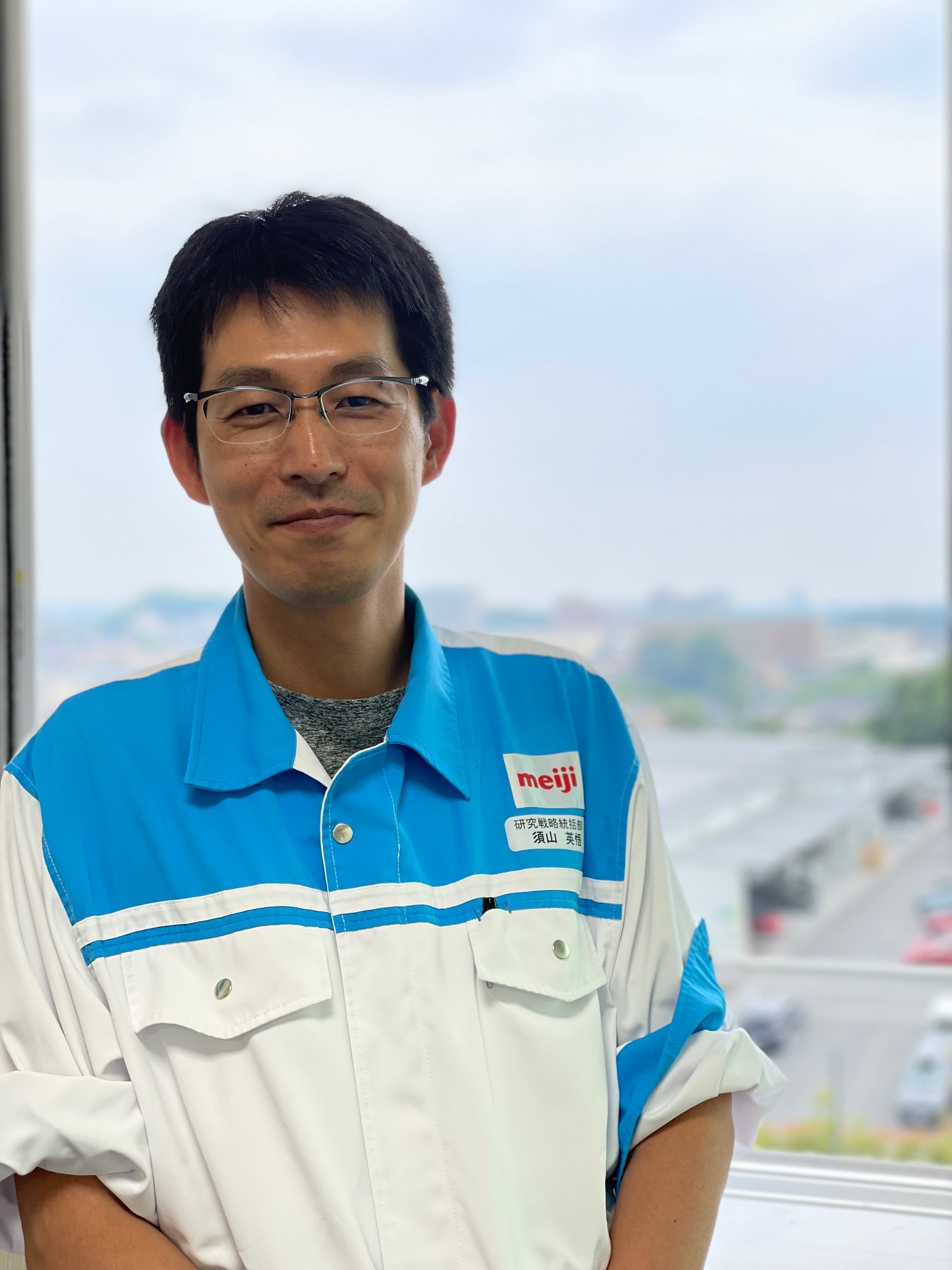
Eigo Suyama
Doctor of Dentistry
Research Strategy Department (Research Strategy G), Research Headquarters (Research Strategy Control Division), Meiji Co.
D. from Nagasaki University Graduate School of Medicine and Pharmaceutical Sciences. D. in Dentistry from the Graduate School of Frontier Sciences at the University of Tokyo in 2003, and joined Meiji Seika (now Meiji Co., Ltd.). D. in Dentistry from the Graduate School of Pharmaceutical Sciences, Nagasaki University in 2011. In the same year, he was transferred to the Confectionery Product Planning Department at the head office, and in 2020, he became the head of Development 2G, Cacao Development Dept. From April 2022, he will be a full-time section chief of the Research Strategy Dept. in the Research Division, where he will formulate long-term research strategies.
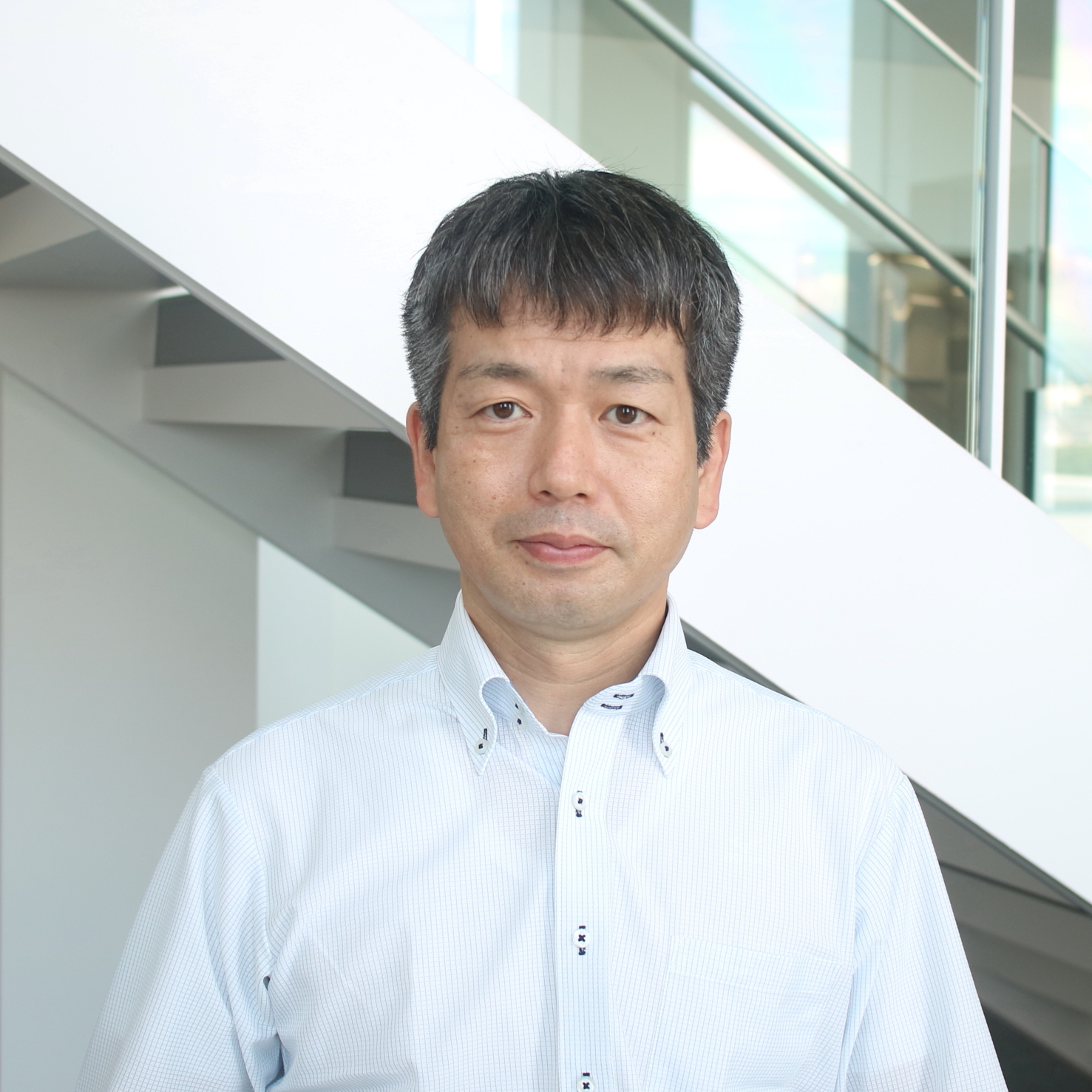
Akimasa Hatanaka
Doctor of Agriculture
Nippon Suisan Kaisha, Ltd. Head of Laboratory, Aquaculture Research Laboratory, Central Research Institute
D. (Agriculture), Graduate School of Agricultural and Life Sciences, The University of Tokyo. D. in Agricultural Science, Graduate School of Agricultural and Life Sciences, The University of Tokyo.
| No. | subject of an address | Principal Investigator's Name | belong to |
| O-001 | Elucidating the unique relationship between dragonflies during hatching. | Akihisa Shibata | Tohoku Gakuin Junior & Senior High School |
| O-002 | Development of brain training tasks using scratch and its clinical application | Mei Echigoya | Myogogakuen Junior & Senior High School |
| O-003 | Development of biodegradable materials with temperature-selective solubility | Satone Tanigaki | Ibaraki Prefectural Takezono High School |
| O-004 | Tissue Culture of Clover | Fumino Otani | Takehaya Junior High School attached to Tokyo Gakugei University |
| O-005 | In Vivo and In Vitro Changes in Fish Sex Change and Establishment of Sex Identification Using Blood Sampling | Haruto Aiki | Asano Junior and Senior High School |
| O-006 | Bitter chocolate for skin care (sun protection) | Hana Shiota | Yamamura Gakuen Yamamura International High School Biology Club |
| O-007 | Development of lightweight, low-cost drive actuator optimized for RCJ | Junpei Saito | Keio Shiki Senior High School |
| O-008 | A Day in the Life of a Red-Bellied Newt: Analysis of Circadian Rhythm and Sociality by Construction of a Behavioral Analysis System | Kaho Fujita | Secondary School attached to the Faculty of Education, The University of Tokyo |
| O-009 | How did protozoa, which can only live in the gut of termites, maintain their diversity until the present day? | Manjiro Nozawa | Secondary School attached to the Faculty of Education, The University of Tokyo |
| O-010 | Cosmic ray observation by synchronization of fog box and cosmic ray detector | Aimi Sawai | Kanagawa Prefectural Kawawa High School |
| O-011 | Exploration of regenerative factors expressed in the blood of red-bellied newts. | Minamihana Fujimoto | Mita International High School |
| O-012 | Investigation of the Influence of Ink on the Formation of Green Luster in Red Pigment | Yuri Minoura | Bunkyo Gakuin University Girls' Senior High School |
| P-101 | Changes in wetting to rain depending on the way the umbrella is held | Kazuyoshi Koide | nashi (Pyrus pyrifolia, esp. var. culta) |
| P-102 | Relationship between regular polygons and soundproofing | Kazunari Sadahiro | Yamaguchi Prefectural Tokuyama High School |
| P-103 | Coloration in Herb Dyeing | Ayaka Oishi | Shizuoka Shuoba |
| P-104 | Effects of Light Stress on Learning Memory Formation in Slugs | Japanese reading of a kanji (sometimes esp. in ref. to readings that do not correspond to the orig. Chinese meaning) | Mita International School |
| P-105 | Exploring the natural environment through a survey of walking insects | Rennosuke Shimano | Urawa Jitsugyo Gakuen High School |
| P-106. | Replacement of silkworm cocoons between different individuals | Akari Sugasaki | Yokohama Science Frontier High School |
| P-107. | Research on fermented foods using peanuts | Yuna Mizukami | Shibuya Kyoiku Gakuen Makuhari Junior High School |
| P-108 | Water purification filter using spider silk | Hanashi Sasaki | Showa High School Attached to Showa Women's University |
| P-109 | Relationship between the pictures drawn by young children and their mental and physical development | Mio Ochiai | Shizuoka Sugoha High School |
| P-110 | Perfect Angle for paper airplanes that fits your height! | Akira Takuno | Yamaguchi Prefectural Tokuyama High School |
| P-111 | Effects of pump walking on performance on a hundred-counting task. | Aizora Kubo | Mita International High School |
| P-112 | Impact of an exotic species of Japanese yellow loach on native loach. | You're right. | Urawa Jitsugyo Gakuen Junior & Senior High School |
| P-113 | Development of Hovercraft - Strategies of Maidens | Heki Sakaue | Yokohama Science Frontier High School |
| P-114. | Research on activated carbon using peanut shells | Makoto Watanabe | Shibuya Kyoiku Gakuen Makuhari Junior High School |
| P-115. | Elements that make music unique | Yamada Sakurana | Shizuoka Sugoha High School |
| P-116. | Achievable altitude limit of PET bottle rockets | Chizakura Hashimoto | Showa High School Attached to Showa Women's University |
| P-117. | Can the force of a magnet be measured using the equation of motion? | Shiga Genpai | Yamaguchi Prefectural Tokuyama High School |
| P-118 | Plants Affected by the Effects of Green Beetle | Kinue Miyata | Mita International High School |
| P-119. | Hypothesis and verification of seed dispersal in Gaku hydrangea | Kosei Miyamoto | Urawa Jitsugyo Gakuen Junior & Senior High School |
| P-120 | Toward Fertilization of Membrane Yeast | Yoshiyoshi Kusano | Yokohama Science Frontier High School |
| P-121 | Relationship between atmospheric dust and solar radiation | Bando, Yosuke | Yamaguchi Prefectural Tokuyama High School |
| P-122 | The search for commonalities in the antagonistic action of koji molds | Rinna Fukuoka | Mita International High School |
| P-123 | Effects of oxygen microbubbles on fish and shellfish | Katsumi Yamazaki | Urawa Jitsugyo Gakuen Junior & Senior High School |
| P-124 | Predicting guppy release status based on population characteristics | Sadaharu Yoshino | The University of Tokyo, Faculty of Education, Secondary Education |
| P-125 | Relationship between parasite parasitism in shrimp and water quality | Masaharu Suzuki | Saitama Prefectural Kuki Hokuyo High School |
| P-126 | GPS-based inter-island migration study of crow pigeons | Katsumi Mimi | Tokyo Metropolitan Kokubunji High School |
| P-127 | Study of tsunamis caused by outer-rise earthquakes | Sogo Nakamura | Tokuyama High School |
| P-128 | Search for novel antibiotic-producing bacteria using external stimuli | Sho Nishimura | Mita International High School |
| P-129 | Reproduction of the environment in the laboratory | Sosuke Ikeda | Urawa Jitsugyo Gakuen Junior & Senior High School |
| P-130 | The Effect of Weeds on Crops | Ryoichi Masuo | Secondary School attached to the Faculty of Education, The University of Tokyo |
| P-131 | Development of Bioethanol Production Method Using Exotic Plants and Investigation of Higher Efficiency | Tsuchiya Isshin | Kuki Hokuyo High School |
| P-132 | A study on vocal communication of the crow pigeon, a natural monument | Kubo, Koujiro | Tokyo Metropolitan Kokubunji High School |
| P-133 | Expression of nsCCN after right foreleg amputation in red-bellied newts. | Hasegawa Hikari | Mita International High School |
| P-134 | Radiation measurement and image analysis using a webcam | Tadahiko Hayashi | St. Mary's International School |
| P-135 | Development of Air Purifier Using Gunma Rhizobium - Reducing Greenhouse Gases and Aiming for a Sustainable Society | Spacei Arikawa | Yotsuba Gakuen Secondary School |
| P-136 | Investigation of symbiotic conditions between marine luminescent bacteria and plants | Kazuki Okutani | Ibaraki Prefectural Midorioka High School |
| P-137 | Stabilization of water treatment using magnetic separation | Yuka Washoku | Utsunomiya Junior College High School |
| P-138 | Research on psychological and physiological effects of listening to mice singing | Maana Morino | Gakushuin Girls' Senior High School |
| P-139 | Food Waste Saves the Planet! Yeast Makes the SDGs Come True! | Riho Yoshiba | Gunma Prefectural Ota Women's High School |
| P-140 | Factors Influencing Residents' Evacuation Behavior in the Great East Japan Earthquake | Hinako Arai | Gunma National College of Technology |
| P-141 | Effect of calcium concentration on crayfish | Keito Fujiyama | Kosei Gakuen High School |
| P-142 | Does the leafy mountain sponge have anti-lactobacillus action? | Haruka Kase | Kumon International Academy High School |
| P-143 | Follow the whereabouts of the pigment! 〜Production and Utilization of Colored Cocoons | Ayano Sasaki | Koran Women's School |
| P-145 | Japan's Possible Revival by Science: A Comparative Study Between Japan and the U.S. | Kosuke Shimizu | Yamagata Prefectural Tozakuragakkan High School |
| P-146 | Fructooligosaccharides increase the percentage of intestinal bacteria producing short-chain fatty acids | Hiroki Shuku | Yamamura International High School |
| P-147 | Aquatic mite fauna in terrestrial waters and water quality assessment II | Mimi Sawato | Yamanashi Eiwa High School |
| P-148 | small-scale hydraulic power | Sumitomo Li Cheng | Yamanashi Prefectural Kofu Daiichi High School |
| P-149 | Intestinal bacteria of beetle larvae | Aoi Yamaki | Yamanashi Prefectural Nirasaki High School |
| P-150 | Exploring the shape of wind turbine blades that can efficiently generate electricity | Keita Sueyoshi | Hatsushiba Tondabayashi Junior High School |
| P-151 | Cicada Shell Utilization and Environmental Impact | Ryuka Kato | Kanda Junior High School |
| P-152 | Study on the effectiveness of carbonized wood | Takuto Kimura | Chiba City Tsuga Junior High School |
| P-153 | Changes over time in the carbon budget in the school's mountain forest and verification of improvements in carbon fixation function. | Ayato Kondo | Asano Gakuen |
| P-154 | Language World Model | Yuta Sawada | Waseda Jitsugyo Senior High School |
| P-155 | On the ability of tussocks to sense light | Kazuhiro Komatsu | Junior High School Attached to Suwa Seiryo High School, Nagano, Japan |
| P-156 | Consumer Perceptions of Ethical Consumption | Japanese cherry birch (Betula grossa) | Tokyo Gakugei University International Secondary School |
| P-157. | Challenges in collecting microfiber from households | Kanno Hanazono | Tokyo Metropolitan Tama Science and Technology High School |
| P-158. | Changes in bird fauna in the Izumi Tama River over the past 48 years and their factors | Aiyu Watanabe | Tokyo University of Agriculture First High School |
| P-159. | Study on Forest Structure of Arimine Nishitani Beech Forest by Tree-by-tree Survey in a Square Area | Koutaro Haneda | Toyama Daiichi High School |
| P-160 | Maximize the number of people available by determining the placement of the children's cafeteria well. | Jiara Ohashi | Toshimaoka Girls' Gakuen High School |
| P-161 | Making glowing ornamental snails - making bait | Michihito Muto | Dokkyo Saitama Junior High School |
| P-162 | Development of Model Rocket - Challenges as the 6th student of GRC | Sato Flower | Sagami Women's University Junior & Senior High School |
| P-163 | Study on behavioral characteristics of prey in fish | Sho Saito | Tokyo Metropolitan Shiro-oaki High School |
| P-164. | Use of peanuts as soil conditioner and development of peanut tea | Youyo Fujiki | Shibuya Gakuen Makuhari Junior & Senior High School |
| P-165 | Why do crows crow? Where do they go? | Raoi Shimizu | Yamanashi Eiwa Junior High School |
| P-166 | Wavelengths and rhythms of frequencies that cats escape | Marina Ikeda | Showa High School Attached to Showa Women's University |
| P-167 | The role of mushrooms in forest ecosystems and their relationship with other organisms - kino communication. | Yasumitsu Fujiyoshi | Asano Junior and Senior High School |
| P-168 | [NEST LAB.] Does the lifespan of the praying mantis depend on its food? | yellowtail amberjack (species of fish, Seriola lalandi) | Shinjuku Ochiai Junior High School |
| P-169 | [NEST LAB.] Comparison of growth rates of lung and gill respiration using Polypterus. | Noguchi, Shunji | NEST Project |
| P-170 | [NEST LAB.] Leopard Lizard Monkeys and Environmental Enrichment | Yuna Konno | Tokyo Metropolitan Koishikawa Secondary School |
| P-171 | NEST LAB.] Natural clean energy that can be used in urban areas | Seiichi Kondo | Shibaura Junior High School |
| P-172 | [NEST LAB.] Development of the safest and fastest nitrobenzene reductant in high schools. | Shin-Euro Ishimoto | Kanagawa Gakuen High School |
| P-173 | Inexpensive sliding microtome to create | Haruto Akase | Ehime Prefectural Imabari-Nishi High School |
| P-174 | Development of metalworking machines specialized for manufacturing department activities | Tatsuya Matsuura | Toyota Technological College |
| P-175 | Production of radio-controlled weeding robot to cut grass on slopes | Kyogo Takahashi | Yamagata Prefectural Murayama Industrial High School |
| P-176 | Maritime Robot Vacuum Cleaner - Aiming to be a Pioneer in Marine Debris Collection | Tomoki Doi | Okayama Gakugeikan High School |
| P-177 | Research on automatic product placement machine using LM Guide | Reo Tokugawa | Hiroshima Prefectural Hiroshima Junior High School |
| P-178 | Build a catapult specifically for model rockets. | SAKAMOTO, Aozora | Junior High School Attached to Yokohama Science Frontier High School |
| P-179 | Development of transport drone-related technologies | Xiaoshou Hoshi | Kaisei High School |
| P-201 | Development of hand-pulled noodle-making machine for home use | Ando, Ohsho | Okayama Prefectural Tamano High School |
| P-202. | Microplastic collection robot | Shirei Tanaka | Matsuda Elementary School, Ginoza Village, Okinawa, Japan |
| P-203. | Rider Slope | Shohei Azuma | Kobe Municipal High School of Science and Technology |
| P-203. | Rider Slope | Shohei Azuma | Kobe Municipal High School of Science and Technology |
| P-204. | NEST LAB.] Inexpensive security box | Tatsuki Kubota | Tsukudo Elementary School |
| P-205. | [NEST LAB.] Increase solar power generation! | Yudanro Miyazaki | Shakujii Junior High School |
| P-206. | Jelly sorting machine | Kanade Ohashi | Nagoya City Tamitsu Junior High School |
| P-207. | NEST LAB.] Dog-shaped robot that can remember faces and voices | Fumiaki Inoue | Kokura Elementary School attached to Fukuoka University of Education |
| P-208. | NEST LAB.] Robot that teaches people to leave water out. | Kota Ishibashi | Fujimi Elementary School, Chiyoda-ku, Tokyo |
| P-209. | NEST LAB.] Minimizing damage from tsunamis generated by earthquakes | Rei Hasegawa | St. Dominic's Junior & Senior High School |

keynote speech
Small Molecule Drugs That Changed the World."
Naoya Kumagai / Professor, Faculty of Pharmaceutical Sciences, Keio University
Among the small organic compounds discovered in nature, there are many that have contributed to the significant extension of human health, medicine, and life span. It was a small molecule immunosuppressant drug from Japan that made possible organ transplantation, which had been avoided due to postoperative rejection, although technically feasible. In this lecture, we will discuss how the drug was discovered and how it has evolved from structure determination at the molecular level to a pharmaceutical product. We will also discuss the appeal of synthetic organic chemistry, which can identify molecular structures and freely transform them to provide a variety of functions, along with the motivation behind the research.
<プロフィール>
2005 Completed Doctoral program, Graduate School of Pharmaceutical Sciences, The University of Tokyo (Doctor of Pharmacy, Pharmacist).
After studying abroad in the U.S., teaching at a national university, and working as a researcher at a public interest foundation research institute, he assumed his current position.
He has been engaged in research in organic chemistry since his doctoral program. He has been engaged in research on the development of new chemical reactions and has presented to the world efficient methods for the production of high value-added organic compounds such as pharmaceuticals. Recently, he has been conducting research on the chemical synthesis of unique new molecules that do not exist in nature 2022, aiming to develop functional materials designed and controlled at the molecular level.

Workshop
A Peek into the World of Pharmacy
(Try the one-minute pitch!)
The maximum number of participants for the 1-minute research pitches is 10] Audience is free!
Partner: Faculty of Pharmacy, Keio University
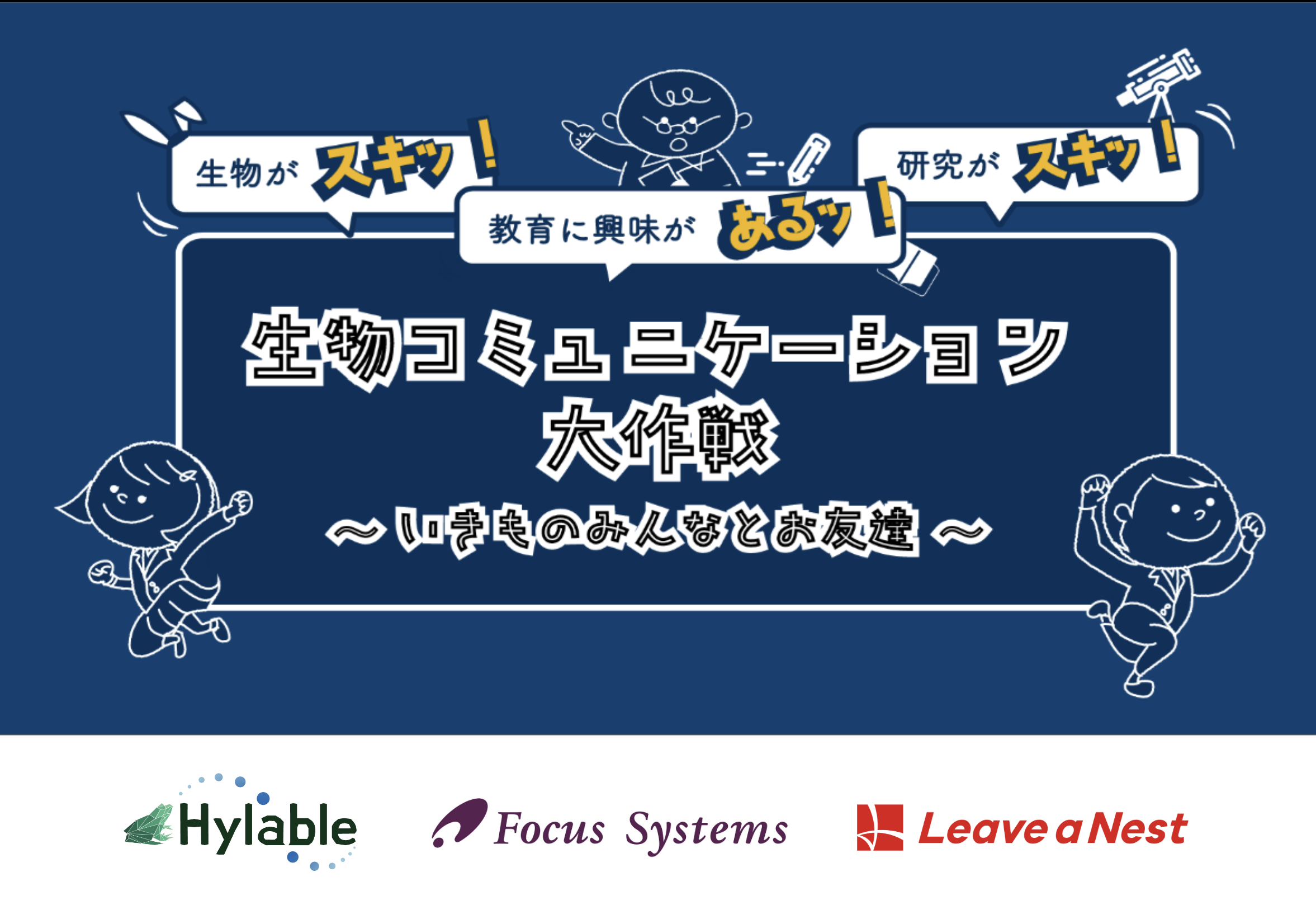
Workshop
Biological Communication Grand Presentation ~A Collection of Everyone's Interesting Research~!
Partner: Focus Systems Hirable, Inc.
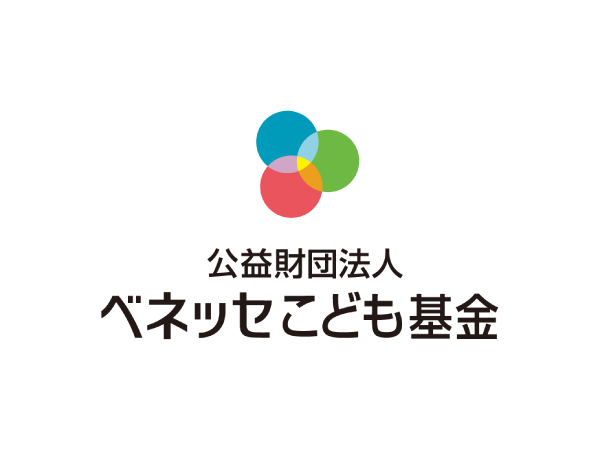
Workshop for Teachers]
Recommendations for D&I research to be undertaken close to home
~Diversity & Inclusion (D&I) research is the study of oneself~.
Partner: Benesse Children's Foundation
*Pre-registration is accepted.
Workshop
A Peek into the World of Pharmacy
(Try the one-minute pitch!)
The maximum number of participants for the 1-minute research pitches is 10] Audience is free!
One-minute pitches will be selected if capacity is exceeded. Audience is open to anyone (you can even skip it on the day of the event).
One-minute pitch participants have reached capacity and are closed.
Audience participation is open to all. We look forward to seeing you there.
Partner: Faculty of Pharmacy, Keio University

Guest lecturers from the Faculty of Pharmaceutical Sciences at Keio University and participating students will interactively introduce their research and exchange ideas. Students will give a one-minute short presentation on the research they are currently working on. Make sure that your presentation conveys the appeal of your research. Guest lecturers will also introduce research in a wide range of fields being conducted at the Faculty of Pharmaceutical Sciences. This is your chance to present your research and learn more about the research being conducted at Keio University's Faculty of Pharmaceutical Sciences. We invite you to try your hand at a one-minute pitch! The audience is also free to attend. Please feel free to drop by.
<Guest lecturers
Professor Koji Hase, Department of Biochemistry, Faculty of Pharmaceutical Sciences, Keio University
Azusa Hara, Associate Professor, Department of Pharmaceutical Development and Regulatory Sciences, Faculty of Pharmaceutical Sciences, Keio University
■ Presentation Methods:
You will be challenged to give a one-minute presentation using only oral presentation without slides.
■PresentationsPlease make a presentation on the following two points
(1) Research theme
Please let us know what you are researching or planning to do about this
2) My research here is hot!
Let's tell them the charms and points of interest.
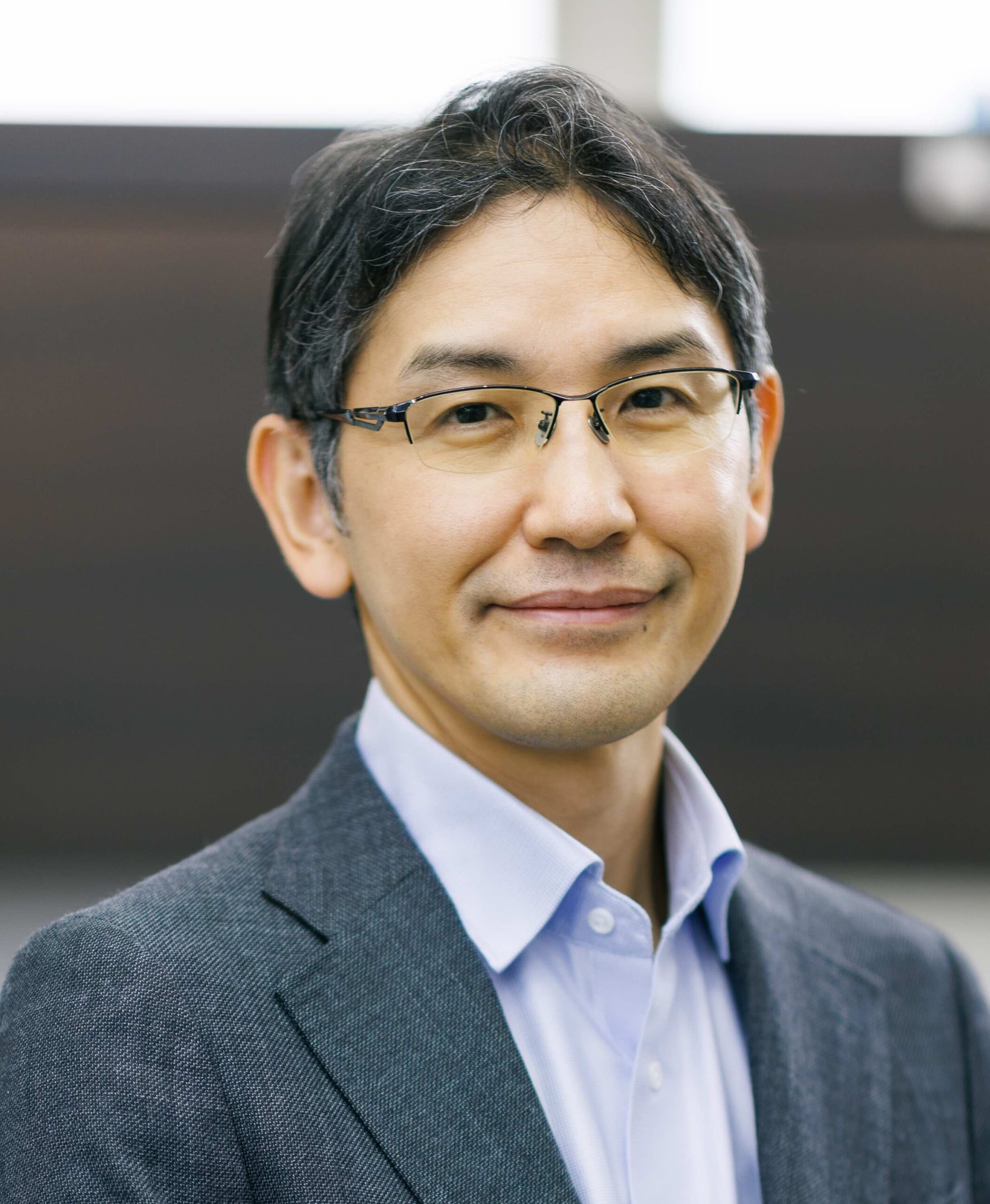
Mr. Koji Hase
Professor, Department of Biochemistry, Faculty of Pharmaceutical Sciences, Keio University
D., he worked as a postdoctoral fellow at the UCSD School of Medicine, a researcher at RIKEN, and a specially appointed professor at the Institute of Medical Science, University of Tokyo before assuming his current position in 2014. From the perspective of microbe-host interactions, he is attempting to elucidate the molecular mechanisms of "disease starts in the gut. In addition, he is currently conducting research on fetal immune and metabolic programming by maternal intestinal bacteria.
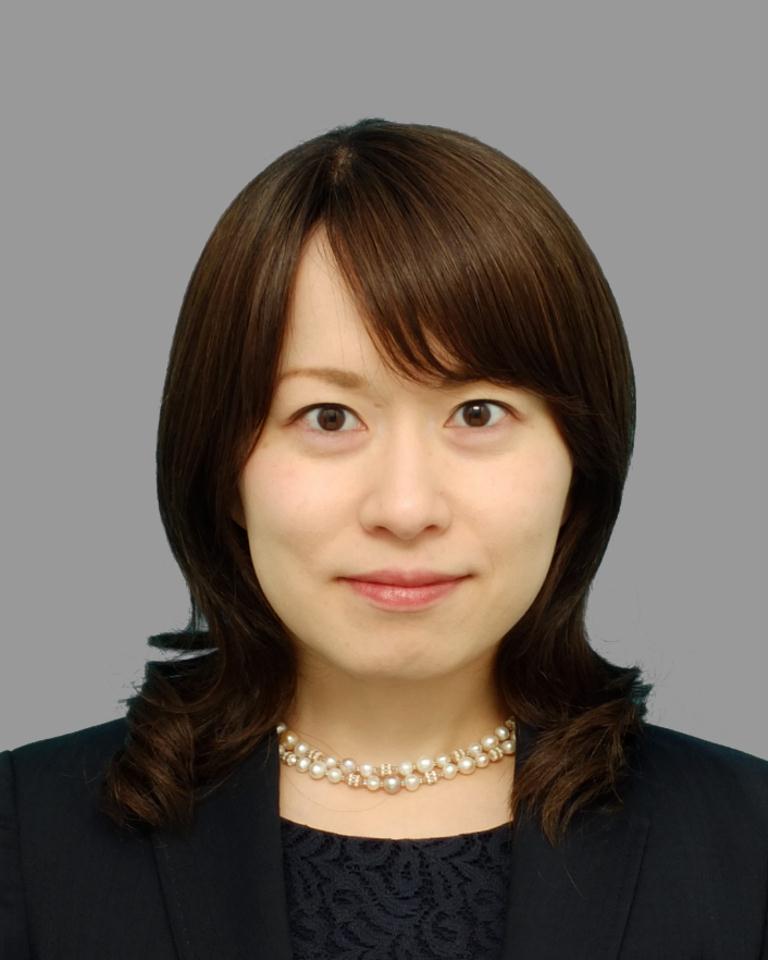
Azusa Hara
Associate Professor, Department of Pharmaceutical Development and Regulatory Science, Faculty of Pharmaceutical Sciences, Keio University
Completed graduate studies at Graduate School of Pharmaceutical Sciences, Tohoku University. D. in Medical Pharmacy. After working at the Department of Prevention Research, National Cancer Center, University of Leuven (Belgium), Erasmus Medical Centre (the Netherlands), and Showa Pharmaceutical University, he joined the Faculty of Pharmaceutical Sciences at Keio University. He specializes in epidemiology and pharmacoepidemiology. He has been involved in cohort studies and randomized controlled trials in Japan and abroad. Currently, he is conducting pharmacoepidemiological studies to evaluate the actual usage, safety and efficacy of drugs using large-scale real-world data such as medical claims information.
Workshop
Biological Communication Grand Presentation
〜A collection of everyone's interesting research
Partner: Focus Systems Hirable, Inc.

Operation Biotic Communication - Friends with All Living Things - aims to connect all living things and humans, junior and senior high school students and adults, companies and researchers through communication to create a world where we can understand each other and coexist in harmony.
In the first half of the session, the adopters and research coaches of the Science Castle Research Fund Hi-Lable Award 2022 will take the stage to talk about the results of their respective research, how interesting it is, and the connections between the adopters and research coaches, as well as a review of the year's activities.
In the latter half of the workshop, under the title of "Everyone's Interesting Research," participants will share what they are currently researching and what they think is "interesting! and "Interesting!" and will be followed by a workshop where people of all ages can share what they are currently researching and what they are interested in.
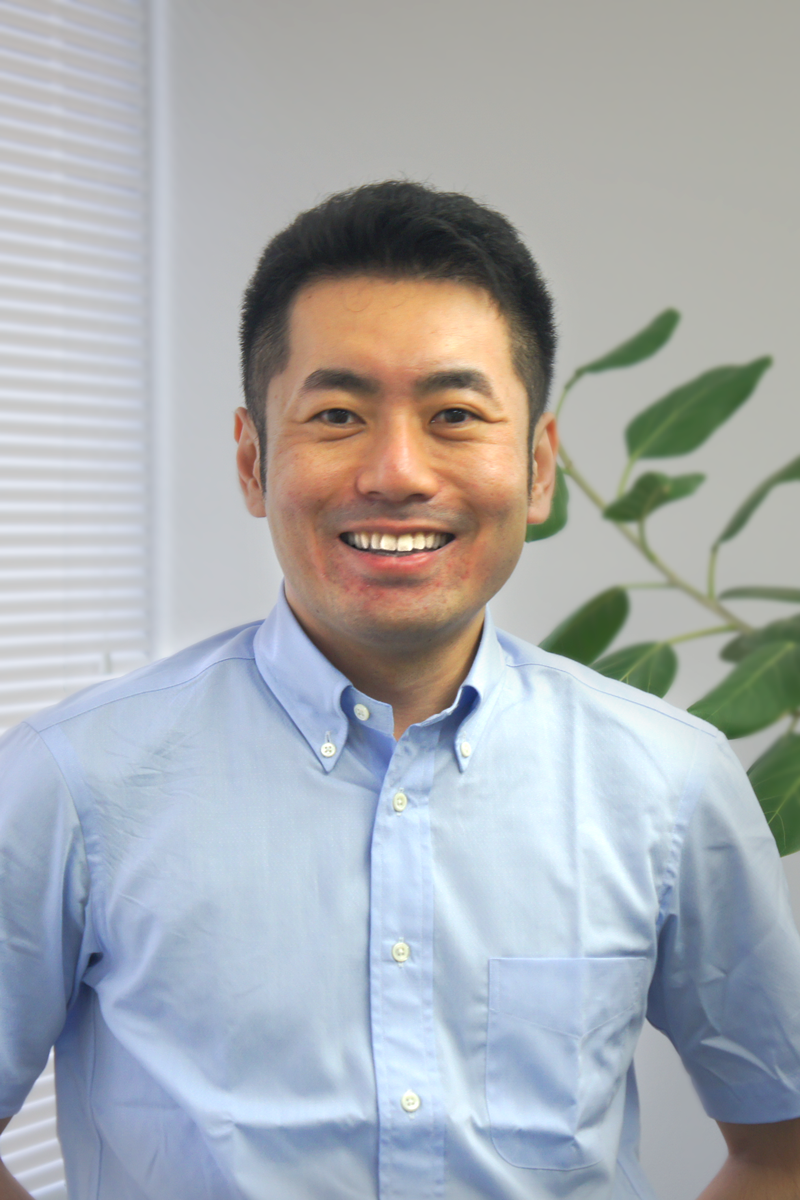
Mr. Kohei Yanagira
HiLable, Inc.
Director of Research and member of the Tadpole Laboratory, HiLable, Inc. He holds a Master's degree in Informatics. Engaged in research on multi-channel source separation based on nonparametric Bayesian methods while in graduate school, joined Rakuten, Inc. in 2013. He joined Rakuten, Inc. in 2013, where he experienced multi-national and multi-site scrum development and facilitation as an engineer at Rakuten Travel, and joined Hylable in 2019. He is in charge of system development and research and development of basic technologies for Hylable / Hylable Discussion, a discussion visualization service, and Bamiel, a place visualization service. At the Tadpole Laboratory, he is researching the possibility of quantification of communication with other researchers who have extensive experience in various fields.
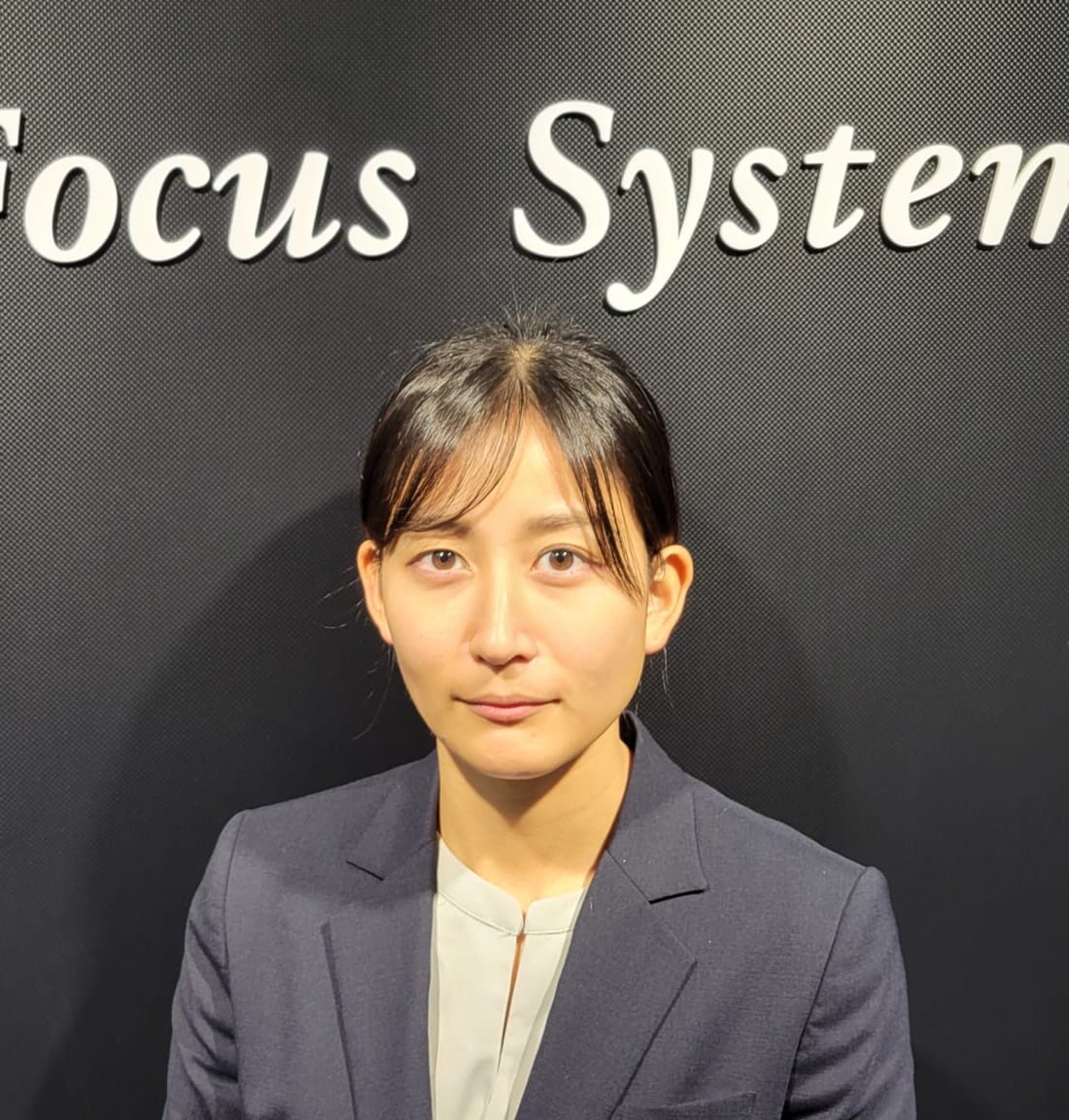
Ms. Yuka Oshima
Focus Systems Co.
He joined Focus Systems, Inc. in 2021 and is a member of the Secure Services Office, Business Creation Department, Business Promotion Division, IT Innovation Business Headquarters. He is assigned to the Secure Service Department, a product sales team, where he sells IT products and plans the company's own products such as IoT, digital watermarking, and encryption tools. At the same time, under the supervision of Mr. Matsuzaka, Deputy General Manager of this division and General Manager of Business Creation Office, he is creating new businesses and managing new projects.
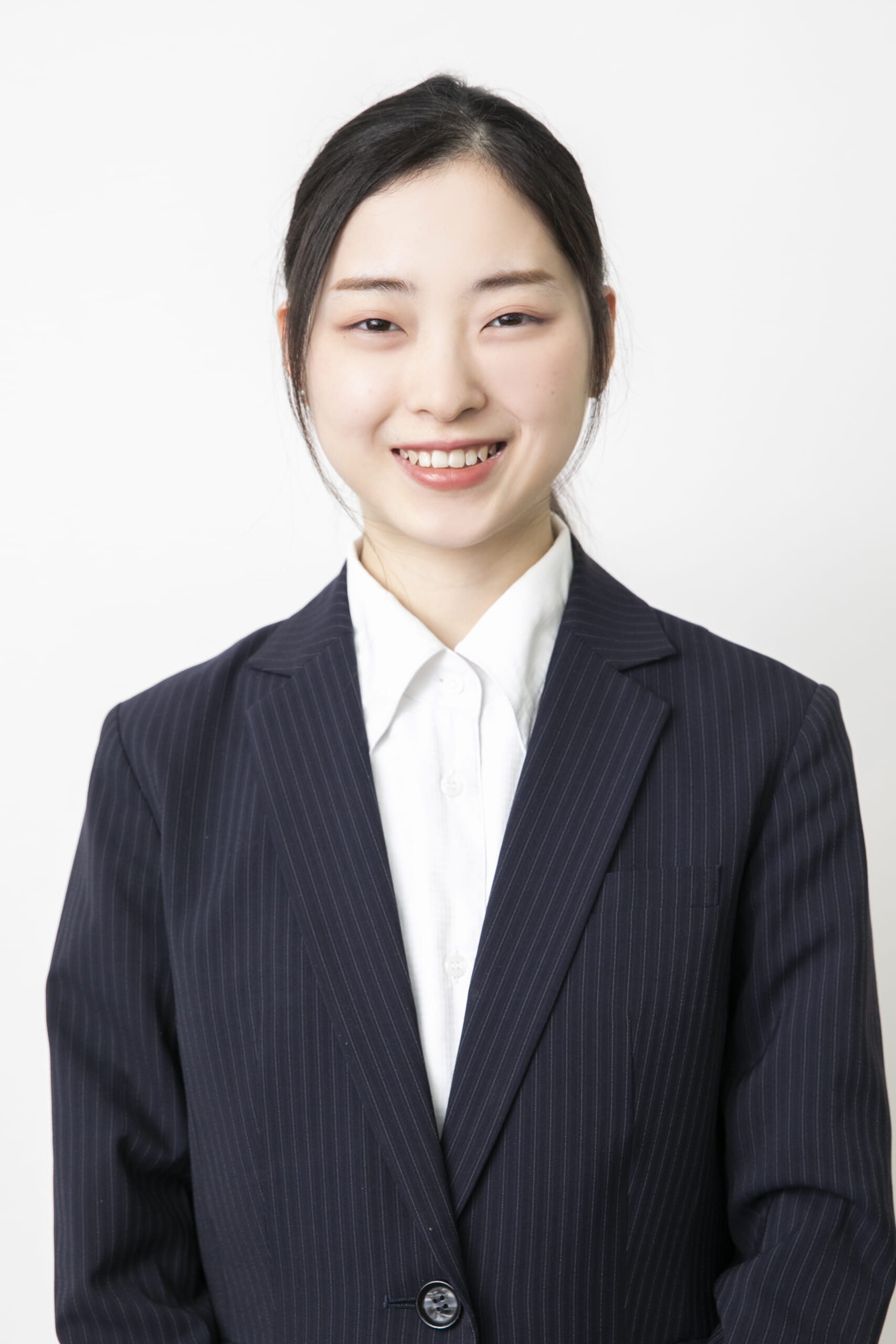
Natsuki Koyama
Leave a Nest Co., Ltd.
Belongs to the Osaka Head Office, Educational Development Division of LIVERNESS CORPORATION. He holds a master's degree in engineering, a first-class high school teacher's license (science), and certification as a special industrial waste management supervisor. He has been involved in research and development of optical sensing devices using nano-engineering and interface chemistry as technologies. He aims to spread the use of "analytical technology" to visualize the invisible, and especially to make the technology using "light" more effective in society. He has been involved in local educational activities and the development of STEAM educational materials.
bridge fellow
Tomohide Miyamoto (Graduate Student, Tohoku University)
Tadashi Ibarata (Graduate Student, Tokyo Metropolitan University)
Ms. Natsumi Habanobe (Graduate Student, The University of Tokyo)
Science Castle Research Fund HiLable Award 2022 Recipient
Akinao Shibata (Tohoku Gakuin Junior & Senior High School)
Mr. Yasumitsu Fujiyoshi (Asano Junior & Senior High School)
Marina Ikeda (Showa Senior High School, Showa Women's University)
Workshop for Teachers]
Recommendations for D&I research to be undertaken close to home
~Diversity & Inclusion (D&I) research is the study of oneself~.
Partner: Benesse Children's Foundation

Applications will be accepted on a first-come, first-served basis from those who register in advance. If seats are still available, participants may join on the day of the event.
We will invite Prof. Shinichiro Kumagai of the University of Tokyo, Ms. Miwako Morimura of Komae Daisan Elementary School, and Benesse Children's Fund to share the important perspective of D&I, the concept of "self-initiated research," and to introduce research in the field of D&I that can be conducted in school life and in children's daily activities. We will also introduce that there is research in the field of D&I that can be conducted in school life and in activities around children.
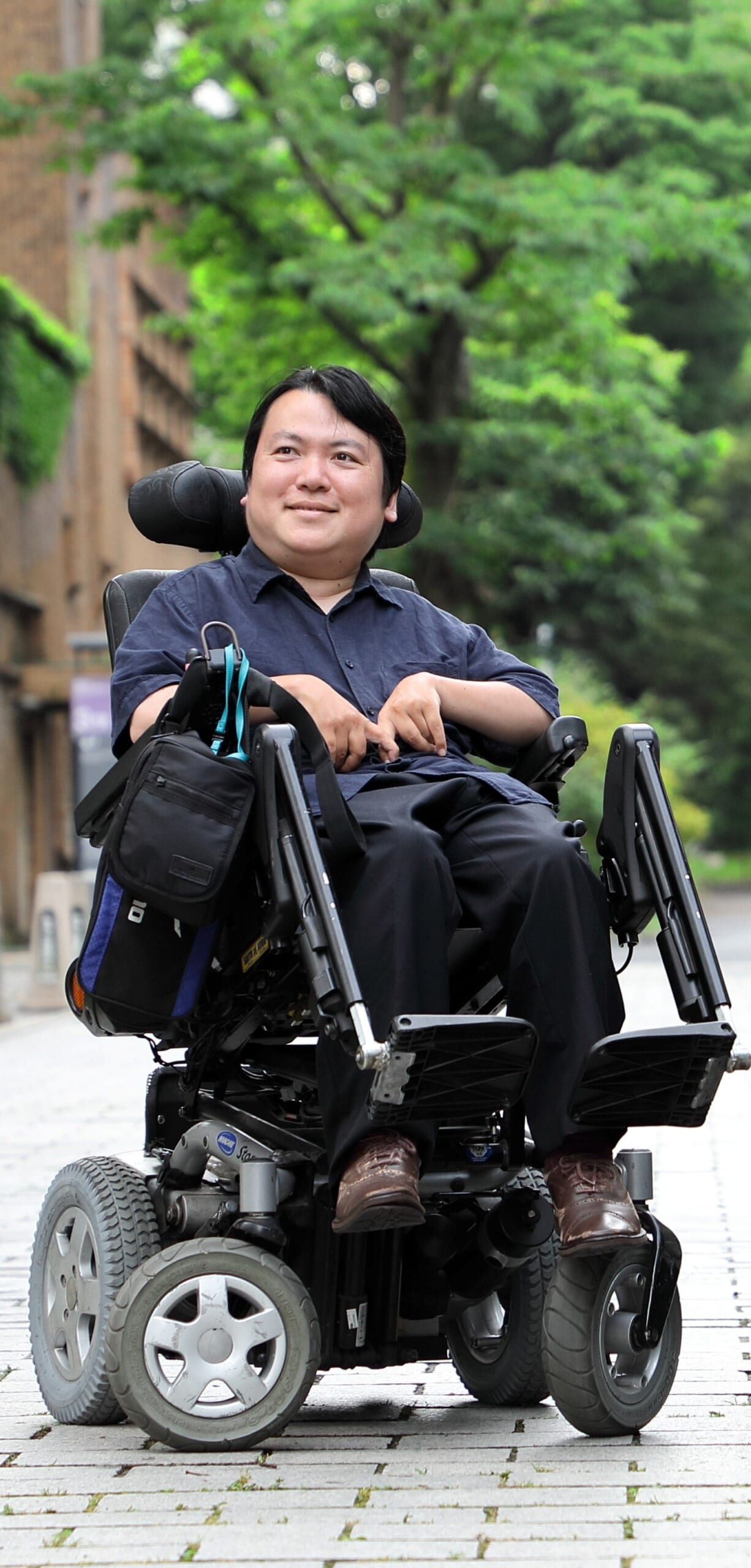
Mr. Shinichiro Kumagai
Associate Professor, Research Center for Advanced Science and Technology, The University of Tokyo
Born in Yamaguchi Prefecture in 1977. He was born with cerebral palsy and lost the use of his arms and legs soon after his birth. Associate Professor at the Research Center for Advanced Science and Technology, University of Tokyo, Director of the Office of Barrier-Free Support, University of Tokyo, Affiliate Member of the Science Council of Japan, and Member of the Committee on Disability Policy, Cabinet Office. D. in pediatrics. Specializes in research on people with disabilities and pediatrics.
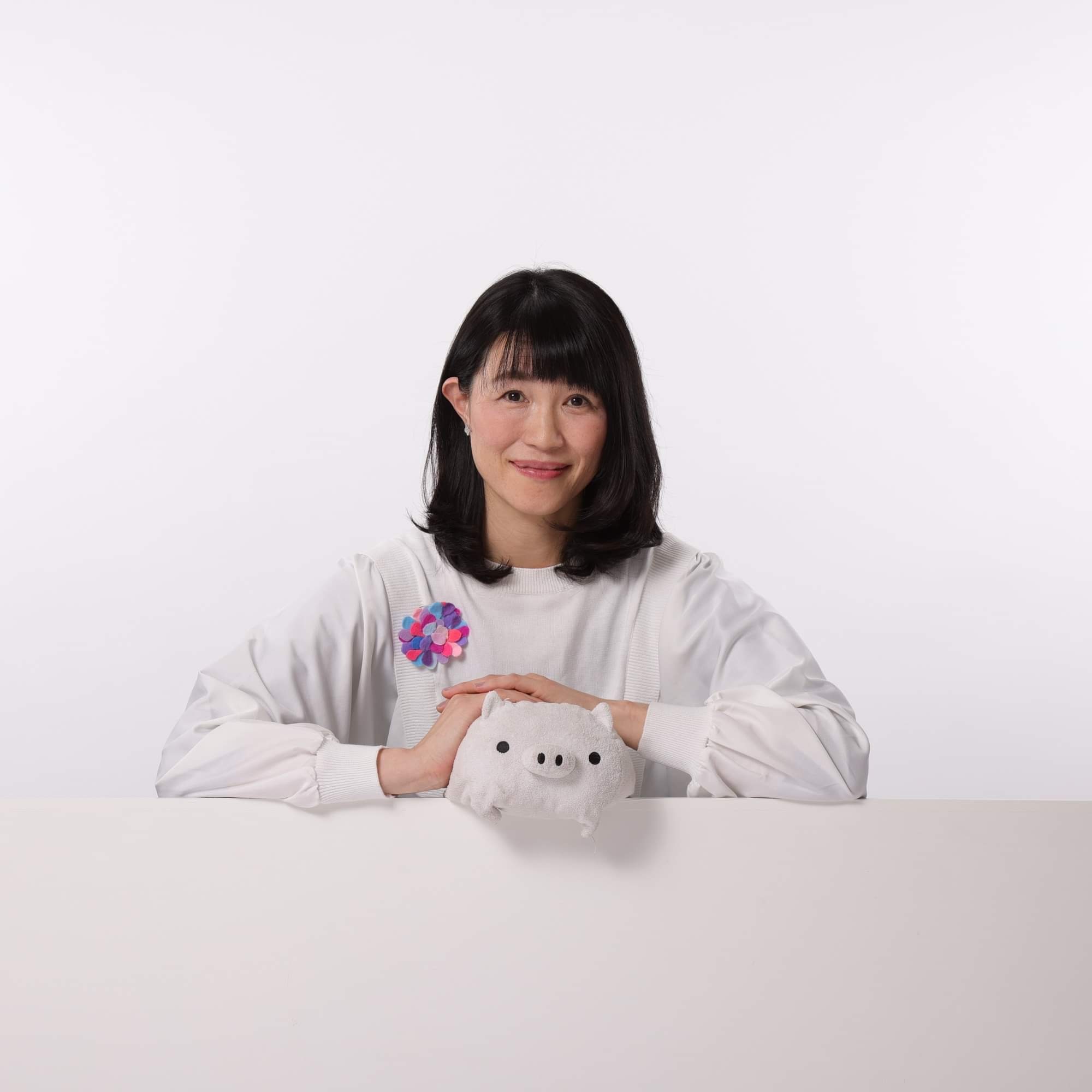
Ms. Miwako Morimura
Autism and Emotional Disorder Special Needs Classroom Teacher, Komae Daisan Elementary School, Komae City, Tokyo
Educational consultation coordinator and school psychologist. After graduating from a national university with a bachelor's degree in education, she worked as a public elementary school teacher in a mentally retarded class and a classroom guidance class. While working as a preservice teacher, she deepened her studies at Waseda University's Graduate School of Teaching and Learning, and currently serves as a special needs classroom teacher. For many years, she has been dealing with the essence of these problems and has been practicing education that removes the difficulties children face in life. He was awarded the Minister of Education, Culture, Sports, Science and Technology Outstanding Teacher Award in 2008, and supervises NHK U &i programs. He is the author of "Self-Research" for Children with Special Needs: The Practice of "Self-Research" Susume Children's "Party Research" (Kaneko Shobo), supervised by Shinichiro Kumagai.
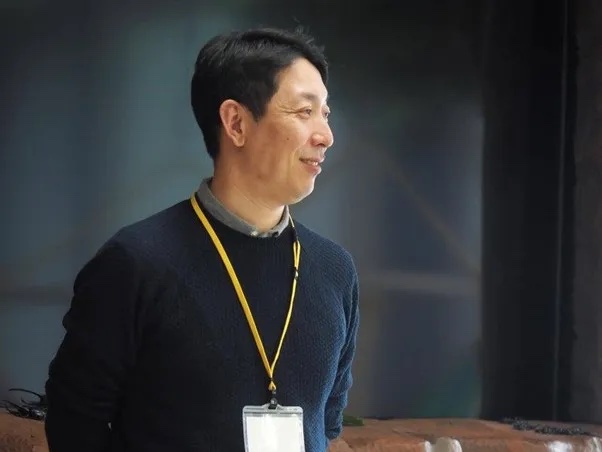
Mr. Tomohiro Aoki
Planning Leader, Benesse Children's Foundation
Executive Director of Benesse Children's Foundation. Born in Machida City, Tokyo. (After working for Benesse Corporation's global division and school division, she was transferred to Benesse Children's Fund in 2018. In addition to providing grants to NPOs and other organizations that support the learning of children with serious illnesses and children with financial difficulties, she also works on her own initiative to create and verify new learning models that utilize public-private partnerships and technology, and to make policy proposals. In his private life, he has been organizing exchange meetings with NPOs and social entrepreneurs since 2007. His mission is to "increase the flow of people crossing borders between sectors.
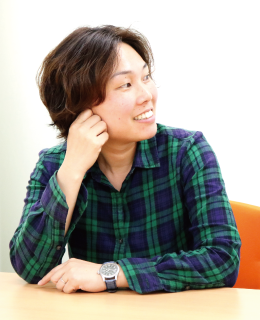
Satomi Maeda
Director, Center for Comprehensive Education and Research, Riverness, Inc.
Educational Development Division/ Center for Education and Comprehensive Research After graduating from high school, she moved to the U.S. She received her master's and doctorate in ergonomic psychology from Wright State University, and joined RIVANES in 2010. She has been involved in the development of training programs for young researchers, teacher training, and international education planning for middle and high school students, and since April 2018, she has been working with teachers at schools on research on evaluation systems and cultivation of non-cognitive abilities as the director of the RIVANES Center for Education and Comprehensive Research.
List of Booth Projects
Booth exhibits of the following projects will be held at the poster venue.

B-001 Keio University Faculty of Pharmaceutical Sciences - A Peek into the World of Pharmacy
Faculty of Pharmaceutical Sciences, Keio University
The latest research being conducted at Keio University's Faculty of Pharmaceutical Sciences to address COVID-19 and future pandemics will be introduced, and the future that pharmaceutical research will open up will be considered. There will also be a hands-on microscopic observation experience. Please feel free to drop by.
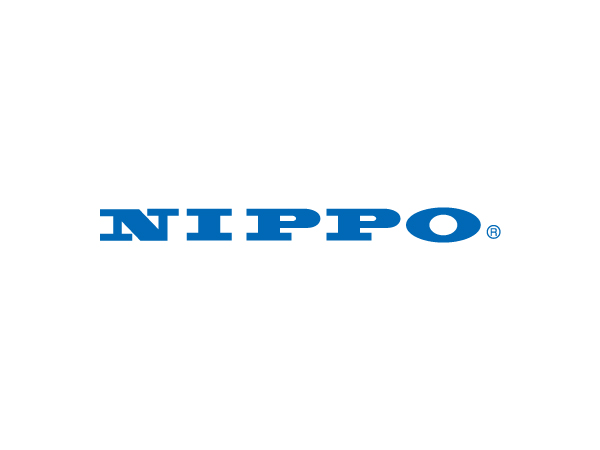

B-002 Research Tools: From the Era of Buying to the Era of Building - Let's Use 3D Technology to Accelerate Research!
Techno Seven Corporation/Nippo Corporation
3D modeling and 3D printers have changed the way the world understands manufacturing. Now, even junior high and high school students can easily handle them. With the theme of accelerating research, this year's event will call for ideas on what areas of research can be utilized, and will allow participants to experience modeling with the latest 3D printers. In order to promote original research, it will become commonplace to build parts for research instead of buying them.
B-003 How will biotechnology change our lives?
Leave a Nest Co., Ltd.
We will introduce the connections between advanced biotechnology and our daily lives, such as genome editing technology and bioplastics. We will also introduce video clips, slides, and other teaching materials that can be used as themes for exploration and problem-based research. We are also looking for model schools to conduct classes!
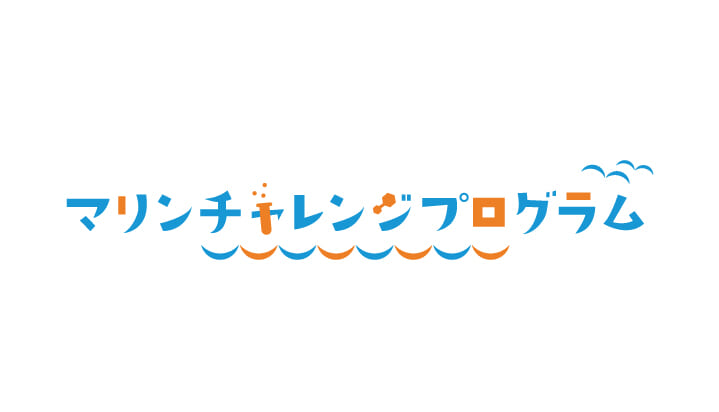
B-004Try your hand at research on the sea and aquatic environment! Marine Challenge Program
The Nippon Foundation, JASTO, Liverness Inc.
The Marine Challenge Program is a program to support you who want to start research on the ocean and aquatic environment. At this booth, we will introduce past research themes, give advice on planning research themes, and introduce the Marine Challenge Program.

B-005 Operation Biotic Communication - Friends with All Living Things
Focus Systems Hi-Lable, Inc. and Liverness, Inc.
Operation Biotic Communication - Friends with All Living Things - aims to connect all living things and humans, junior and senior high school students and adults, companies and researchers through communication to create a world where they can understand each other and coexist in harmony.
The Science Castle Research Fund HiLable Award 2022, which was solicited as part of the operational activities, called for "any kind of research on living organisms" and selected three groups from among many applications.
[3 award-winning teams (titles omitted)
Cat Research Team: Marina Ikeda (Showa Senior High School attached to Showa Women's University)
Dragonfly Research Team: Akinao Shibata (Tohoku Gakuin High School)
Mushroom Research Team: Yasumitsu Fujiyoshi (Asano High School)
At this booth, we will introduce the three Hyrable Award-winning teams and their six-month history with Operation Biocommunication, as well as learn about Operation Biocommunication's future initiatives.
Also, on the day of the event, under the title of "Biological Communication Presentation: A Collection of Everyone's Interesting Research," a workshop will be held where everyone can bring their own "interesting" ideas and share them across generations to expand the circle of research. and share your research with each other across generations to expand the circle of research.

B-006Let's start manufacturing in your own way! Start "Monozukuri 0!
THK Corporation
Monozukuri 0. (Zero Dot) is a project started by THK Corporation and LEVANES Corporation with the aim of supporting "Monozukuri" by junior high and high school students. At the booth, examples of works developed by junior and senior high school students using the "LM Guide," a robot component developed by THK, will be introduced as part of the "THK Monozukuri 0. Award," which supports children working on research and development related to manufacturing. Visitors will also be able to experience the "Automatic Sorting Trash Bin for Recycling," a hands-on educational tool developed by THK engineers that combines their experience and ideas to tickle the inquisitive minds of junior and senior high school students. Can you create a trash can that automatically separates plastic bottles, empty cans, and steel cans?

B-007NEST LAB., a talent discovery laboratory for elementary and junior high school students
NEST EdLAB Inc.
NEST LAB., a talent discovery institute for elementary and junior high school students, is a research school where students can pursue their love of learning online from anywhere in Japan, from Hokkaido to Okinawa. Three majors (Sustainable Science, Robotics and AI Technology, and Entrepreneurship) are available for students to discover their talents. At the booth, we will introduce what you will learn in each major and the activities of our graduates, so please come and visit us!
Partner





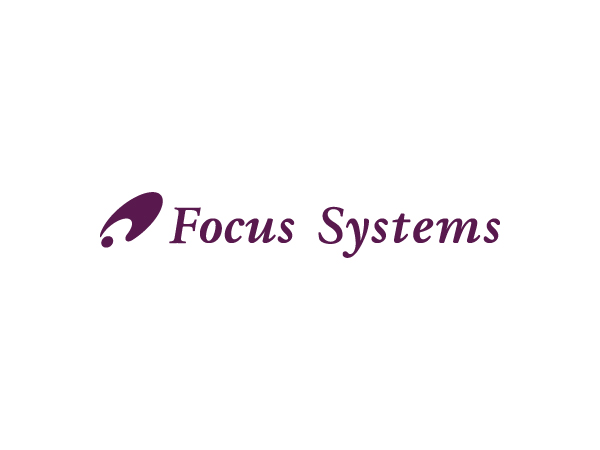

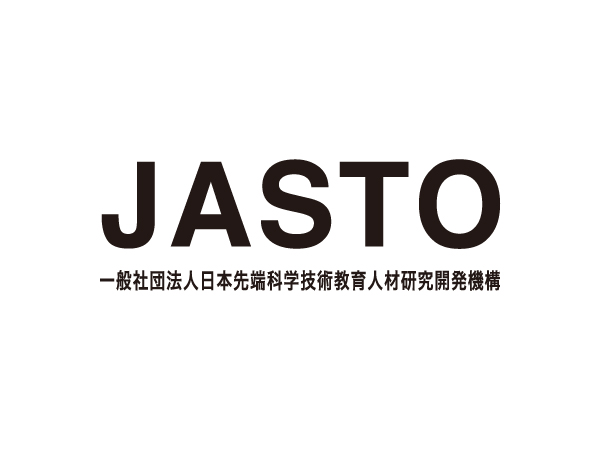

Organizing and planning
